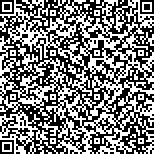| 摘要: |
| 加强农业国际合作开发是中国特色农业现代化道路的重要组成部分,东南亚与我国合作开发地缘优势明显,是我国农业海外合作开发的重要首选区域。在国家“一带一路”的全球战略格局指导下,通过区域比较优势分析等方法,立足我国对粮食等大宗战略农产品的发展需求、东南亚各国的农业资源禀赋与合作意向,从提升我国农业国际竞争力和话语权的高度,系统谋划了东南亚地区农业合作开发的战略重点领域,确定以稻谷、天然橡胶、油棕榈、木薯、甘蔗和林业六大行业为合作重点,以提升原料掌控权和贸易话语权为关键环节,根据东南亚重要交通物流通道、资源禀赋和产业基础的区域差异,提出“三线两区”的合作开发总体布局。围绕各种合作有力推进,提出设立专项基金、加强金融支持、提升政府服务等政策建议保障,为我国政府与企业在东南亚地区长远战略合作的顶层设计提供重要依据和支撑。 |
| 关键词: 东南亚 农业 合作 布局 |
| DOI:10.7621/cjarrp.1005-9121.20150212 |
| 分类号: |
| 基金项目: |
|
| STRENGTHENING AGRICULTURAL COOPERATION IN SOUTHEAST ASIA IN THE PERSPECTIVE OF THE STRATEGIC FOCUS AND LAYOUT |
|
Tang Chong1, Chen Weizhong2, Shen Yuming1
|
|
1.College of Resource Environment and Tourism, Capital Normal University, Beijing 100048, China;2.Chinese Academy of Agricultural Engineering, Beijing 100125, China
|
| Abstract: |
| Strengthen international cooperation in agriculture is an important part of agricultural modernization with Chinese characteristics. Southeast Asia is a priority area of international cooperation in agriculture. Southeast Asia has an excellent agricultural resources, mainly agricultural products in the global market occupies an important strategic position. Agricultural cooperation between China and Southeast Asia has a solid foundation, showing a good momentum of development in recent years. In the future, accelerating development of agricultural cooperation between Southeast Asia and China has obvious geographical advantages. In the new era, under "One Belt and One Road" of the global strategic direction, based on the domestic needs of grain and other important agricultural products, the article conducted a comprehensive analysis of Southeast Asian countries of agricultural resource endowments, industrial base, and willingness to cooperated, using regional comparative advantage analysis, and planned the strategic focus areas of agricultural cooperative development in Southeast Asia, including rice, natural rubber, oil palm, cassava, sugar cane and forestry six industries. Through cooperative development, enhance the control over raw materials; improve the discourse power in agricultural trade. According to the important transportation logistics infrastructure layout, regional differences in resource endowments and industrial base in Southeast Asia, proposed a "three-line two districts" general layout. "Three-line" refers to the three agricultural logistics channel and "Two areas" includes raw material supplying zones and processing trade zones. The raw material supplying zones scope includes Cambodia, Myanmar, Laos and Vietnam, and the processing trade zones scope includes Malaysia, Indonesia, Thailand and Philippines. Among them, in cereal field, Cambodia and Myanmar are as the important grain-planting base, and Thailand and Vietnam are as a strategic base for rice processing and trade. In other areas of oil palm, rubber, etc., the cultivation and trade processing is as a starting point to establish the source of important overseas trading resources base. It requires a series of policies to ensure smooth cooperation. According to the cooperation requirements, we put forward a series of policy recommendations, Such as setting up a special fund, strengthening financial support and improving government services, etc., which provide an important basis and support for developing strategic cooperation in Southeast Asia of Chinese government and enterprises. The most important thing is the sound inter-ministerial coordination mechanism for foreign agricultural cooperation, orderly guide the financial sector and enterprises to actively participate in, establish a viable working mechanism and operation mode. |
| Key words: Southeast Asia agriculture cooperation layout |

